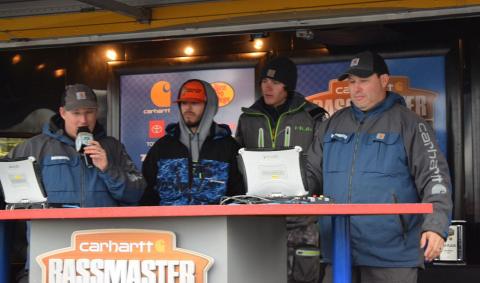Marlene Odahlen-Hinz | Originally published in GameKeepers: Farming for Wildlife Magazine. To subscribe, click here.
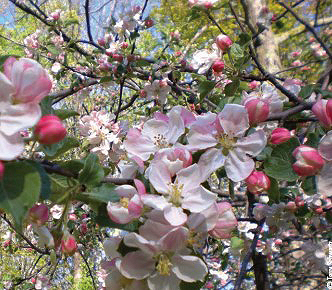
will produce blossoms. A latter bloom will typically
mean a better chance for surviving a killing frost.
Several years ago my husband and I planted several crab apple trees on our hunting property. They did fine but not great, so we decided to talk with an expert on how to better provide an additional low-cost, low-maintenance food source for our deer.
We sat down with John Bailey, of Bailey’s Wholesale Nursery, and Terry Schwartz, Tree Specialist, to get suggestions and advice on what the right combination of fruit trees would be to thrive in our area and help to attract and hold wildlife on our property. Bailey told us to bring an aerial photo of our hunting property which was not a problem since we use this type of map when we’re scouting and to mark our tree stands locations. Because Bailey and Schwartz are both avid bowhunters the maps aided them in determining where the optimum spots were for maximum sunshine, drainage and deer travel patterns, and where the trees would eventually be planted.
My goal was simple—to plant inexpensive, fast-maturing trees that required little or no tending. I called it my “crock pot strategy”—fix it and forget it. We do not have the heavy equipment resources that many rural landowners have so we must rely on a sturdy shovel and a strong back when making improvements to our property.
We are located in “Zone 4” so several varieties of fruit trees that would thrive on our northwestern Wisconsin property were suggested. Since we can experience some severe winters it was important that those chosen were cold hardy. It was also recommended that we should consider trees whose fruit would ripen early as well as some that would ripen later in the season, thereby keeping the wildlife coming back to those areas. Self-pollinating and disease resistance would also be factors in the selection of trees I wanted to introduce as an additional food source the deer, turkey and song birds on our property.
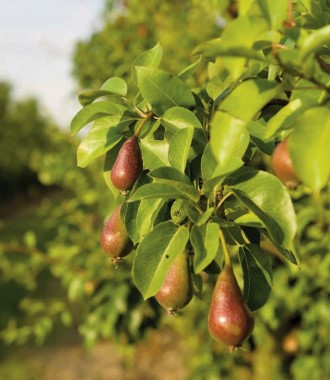
by wildlife. Remember to plant in groups, spaced
properly to ensure pollination.
My goal was not to create an orchard, only to offer an additional food source destination for the deer to complement the food plots we already had cultivated. I wanted to place two to four trees along major travel routes knowing that I could then easily add more trees each year to expand this permanent “oasis.” There are many varieties of fruit trees to choose from that would have been equally suitable, but we selected the following.
Dolgo Crabapple
The first variety of fruit tree discussed was the dolgo crabapple. Because this variety of crabapple originated in Siberia it is extremely hardy in Zone 4. I learned if I plant a 6 foot tree it will generally produce fruit in one to two years. Since the dolgo is a late bloomer I knew I didn’t have to worry too much about those occasional late spring frosts. The fact that it can also hang on to its fruit until November or December made it an attractive addition to help with holding wildlife longer into the hunting season. With sufficient sunlight and normal moisture the dolgo can live from 50 to 70 years. It is resistant to many diseases making it a number one choice for me.
Chestnut Crabapple
The chestnut crabapple has the same desirable qualities the dolgo crab has which make it an excellent compliment. I wanted a fruit tree that would bloomin May lessening any damage from a late frost. The chestnut is able to survive in nearly every soil type. The idea that it produces lots of fruit in the fall sealed the deal on this tree.
Patten Pears
Even though I personally don’t care for the taste of pears I know that deer find themjust as desirable as apples. As soon as the trees flower they will bear fruit, which takes a couple years longer for pears than apples, but it is worth the wait. The Patten pear, like the chestnut and dolgo crabs are very cold hardy and are well suited to temperatures that can dip to -50º F. The fruit is ready in September which is great for the early whitetail opener. With proper sun and moisture Patten pear trees will live just as long as any apple tree so it fits well into my “fix it and forget it” policy.
Summercrisp Pears
Because summercrisps bloom at the same time as Patten pears these two varieties are excellent compatible pollinators for a mini-orchard. From test planting done by the University of MN, summercrisp pears have been recognized as one of the hardiest pears available for Zone 4. This pear variety grows rapidly and can live up to 70 years. Fruit from the summercrisp is ready by mid-August which is about 4 weeks before the Pattens.
Time To Plant
You can plant trees until you can no longer get a shovel into the frozen ground. However, I prefer to plant during early spring. As soon as the frost is out of the ground I begin digging to take advantage of the moisture left by the melted snow and from the early spring rains. I feel there is a higher chance of success when planting in the spring and the odds of their survival much greater.
Bare Root Vs Container
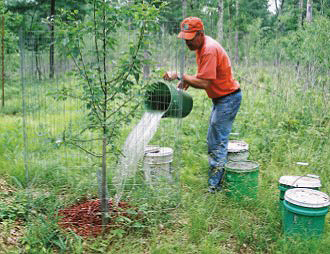
give the roots a good soak.
Many nurseries now only offer trees in containers. As long as you water the container weekly you can take your time planting it until you decide on the right location for the tree. When you do remove the tree from the container it will probably be necessary to loosen up the dirt slightly and cut the roots along the bottom and sides before putting it in the ground. Follow the instruction printed on the tag. Bare-root trees are usually cheaper because you do not have the cost of the container and the potting soil. These trees are dug in the winter when they are dormant and then kept in an environment with high humidity and close to freezing temperatures until they are shipped in the spring. They are much lighter to handle and easier to plant than container trees. Spring is the time they are available for sale at nurseries and should be planted as soon as the soil is able to be worked. You will need to soak the roots in water from 12 to 24 hours before planting.
Site preparation can be difficult for the absentee landowner. Ideally glyphosate should be used to eliminate all competition for your tree and the planting hole worked up and readied so the soil can have time to settle. Living away from the property, we have to work with the time we have, but I believe our success rate will still be very high.
Once planted, spread mulch around the base of the tree. I like to replace the sod I removed when digging the hole but I turn it over. It helps to hold soil moisture and cuts down on weed growth that first year.
Protection
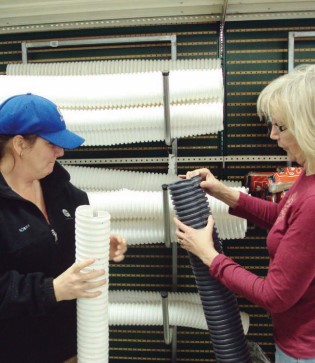
leaving room for growth expansion.
The best piece of information I took away from my Bailey meeting was “Don’t waste time planting a tree if you don’t plan to protect it. It’s easy to remember to purchase fencing to place around the tree to keep the deer and bear at bay until it is large enough to survive their browsing, rubbing and limb bending. However, protection from the damage done by mice, rabbits and voles can be easily overlooked. By using tree guards (corrugated plastic tubes) and tree wraps you can certainly minimize the damage these rodents do.
Adding fruit trees to your hunting property can be as complicated and labor intensive as you want to make it. Begin by planting only a few trees at a time. Knowing that each year you can cultivate another spot or enlarge an existing area will make enhancing your property a project you’ll enjoy rather than viewing it as “work.” In a couple of years you will find out which varieties thrive best, which your wildlife favor the best and which are minimum maintenance regarding watering, fertilizing, spraying and pruning. Deer just want to eat; they don’t think about how blemish free the fruit is or how perfect the shape of the tree is that grew it.
The important thing when adding a fruit plot is to develop an ongoing relationship with a local nursery. Each zone has its limitations so take advantage of their knowledge of plant adaptation and survival. Sadly, we do not have a Native Nursery location here in the great white north, but they still are a great source of information. They can offer you continued service and recommendations for expansion and improvement of these plots so that you, as well as the deer and other wildlife, can benefit from the fruits of your labor.















